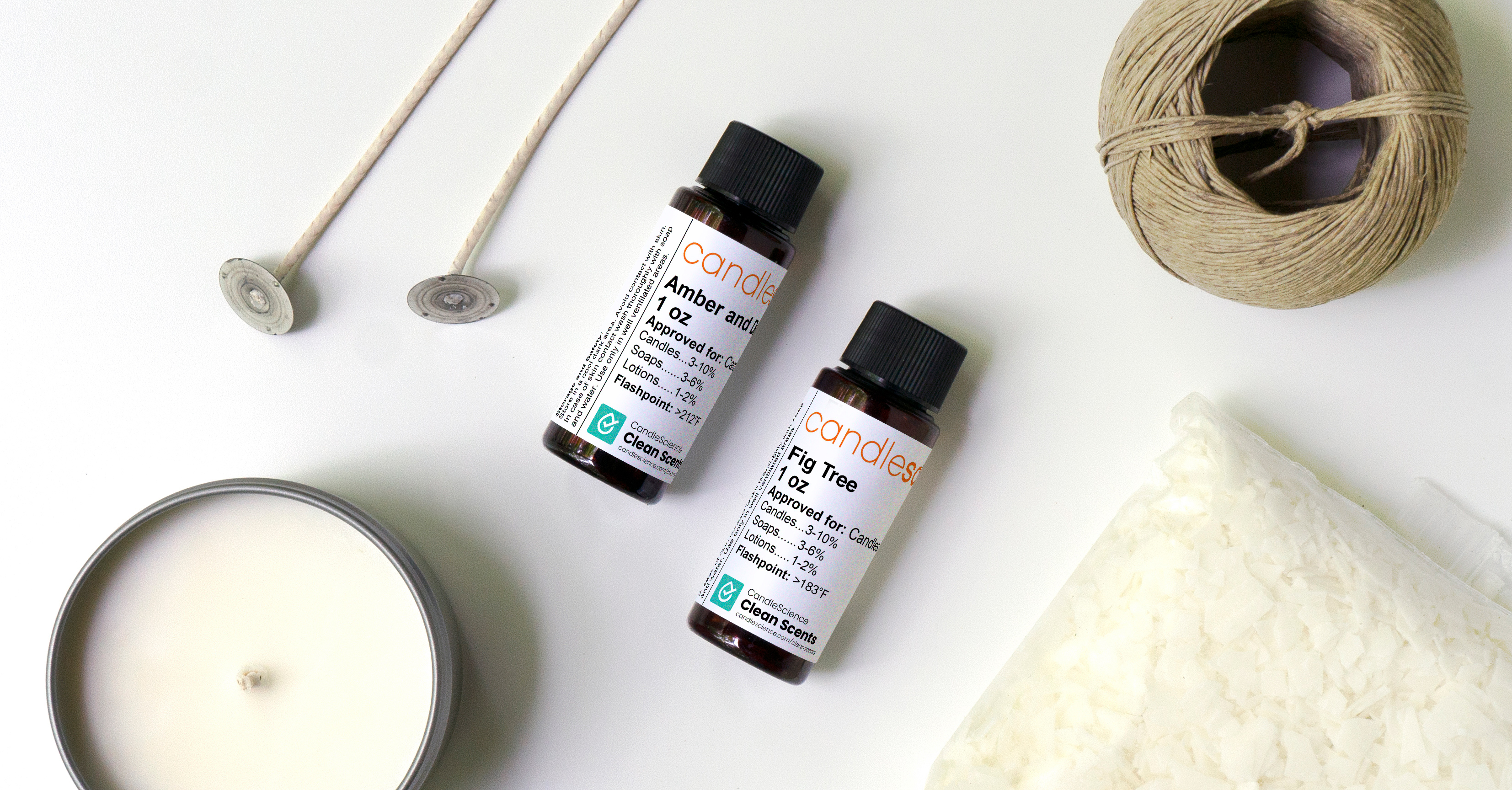About CandleScience Clean Scents™
This article was originally published in 2020 and updated November 2023.
Hello to clearer safety standards—backed by science.
We know two things with great confidence. Many makers create in their homes that they share with children and pets. And most people making scented products want them to contain ingredients that are safe to use and enjoy at home.
However, fragrances have historically been designed for use in mass-produced products made in industrial settings.
The prevailing fragrance safety standards were also developed through the lens of factory production—where safety protocols and good manufacturing practices are in place to protect the people working with fragrances in controlled, commercial environments.
But many of the makers we serve create in their kitchens. And the reality is, they don’t have access to specialized protective equipment or expensive air filtration systems at their homes and businesses.
We recognized the existing fragrance safety standards weren’t made for makers.
Bolstered by this realization, and by our commitment to offer the highest-quality candle making supplies on the market, we set out to reformulate our entire fragrance oil line specifically with the safety of makers—be they crafters, hobbyists, or indie businesses—in mind.
This multi-year undertaking ultimately resulted in our groundbreaking CandleScience Clean Scents™ project.
Launched in 2020, Clean Scents™ is an in-house regulatory program. Through it, the goal is to offer as many fragrances as possible that meet our own rigorous safety standards.
The Clean Scents™ standards are designed so makers can feel confident that the fragrances they use in their homes, garages, workshops, or studios are safe to work with in these settings.
Laying the groundwork for Clean Scents™
In 2015, around the time we decided that the usual fragrance safety standards weren’t sufficient for makers, we saw an additional opportunity for greater transparency about fragrance oils.
That year, the Occupational Safety and Health Administration (OSHA), adopted and began enforcing labeling requirements from the Globally Harmonized System of Classification and Labeling of Chemicals, or GHS. This set of GHS requirements, now enforced by OSHA, required the disclosure of potential hazards of a substance in a commercial facility, and for purposes related to shipping.
While these labeling requirements were not designed for fragrances specifically, they revealed concerning ingredients to us. We decided this was a chance to do something that wasn't routinely done in our industry: eliminate those ingredients and disclose more information about the materials in our fragrances.
The first phase of this work was to reformulate our fragrances to be free of phthalates, cancer-causing ingredients that require a Proposition 65 warning in California, and similar ingredients not on the Prop 65 list. And in the summer of 2019, we completed this extensive process.
But we were just getting started!
Creating the Clean Scents™ standards and fragrances
The International Fragrance Association (IFRA) and the Research Institute for Fragrance Materials (RIFM) are the two organizations involved with developing standards for fragrance materials. IFRA examines the research conducted by RIFM, and informed by that data, sets standards for the use of fragrance materials
Looking at both the GHS requirements from 2015, and IFRA standards, we then began developing the Clean Scents™ criteria.
Fast forward a few years: finally completed to our satisfaction, we took the Clean Scents™ framework to the fragrance houses we partner with to design and manufacture our fragrance oils. These unprecedented standards stretched the creativity of the perfumers and fragrance chemists who had never developed fragrances in this way.
At the same time, we overhauled our testing processes and facilities, hired new people with the skills, education, and experience to rise to this occasion, and developed new tools for evaluating fragrance oils.
We were all-in committed to developing fragrances that met our high standards of safety and performed to our, and customers’, expectations.
And it was tough going at first! We tested around 600 fragrance revisions in total. But steadily we discovered fragrances we loved that met our new criteria. And our fragrance house partners saw firsthand the quality and beauty of the fragrances we created with these new standards.
Another challenging part of this process? The new scents we developed also had to perform and smell amazing! This was one of the most difficult aspects of making Clean Scents™ a reality: some of the removed ingredients were ones that allowed these fragrances to perform so well.
When this happened, we attempted to revise the fragrances to be as close as possible to the original versions in terms of character and performance. But in some cases, this just wasn’t possible. In those instances, we decided to update the fragrance’s character.
So...what exactly makes a fragrance a "Clean Scent?"
Every single fragrance oil we offer is phthalate free and made without ingredients found on California’s Proposition 65 list.
But fragrances with the Clean Scents™ designation go one step further by also avoiding these 5 main hazard groups.
✖ Carcinogens: These are materials known or thought to cause cancer.
✖ Mutagens: Materials that change the DNA of a cell, harming the cell and causing diseases like cancer.
✖ Reproductive toxins: Toxins that adversely affect reproductive organs and increase the risk of birth defects.
✖ Organ toxins: These are toxins that can cause adverse effects or disease within specific bodily organs.
✖ Acute toxins: Toxins that can cause adverse effects from a single exposure. Generally, this would be accidental exposure like spillage or ingestion.
How can you learn about the safety of a fragrance if you're not buying a CandleScience Clean Scent™?
- Look at the Safety Data Sheet (SDS) that must be provided by the supplier for each fragrance.
- Note the OSHA/GHS pictograms on the top of the SDS. The Health Hazards or “exploding chest” pictogram signifies one or more of the hazard groups listed above. Additional pictograms you might encounter are referenced below.
Pictograms to Avoid:
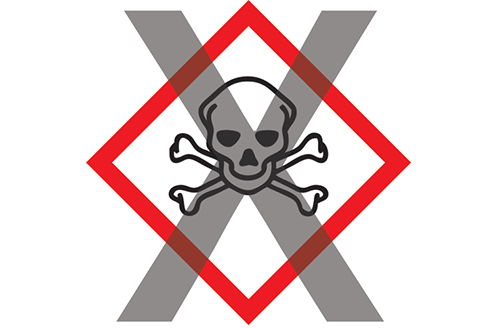
Skull and Crossbones
The Skull and Crossbones pictogram is the one to be most concerned about. It indicates the presence of acute toxins that can be fatal.
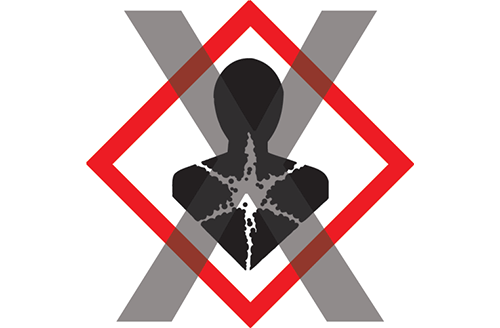
Health Hazards
The Health Hazard pictogram indicates the presence of an ingredient that may cause, or is suspected of causing, serious health effects.
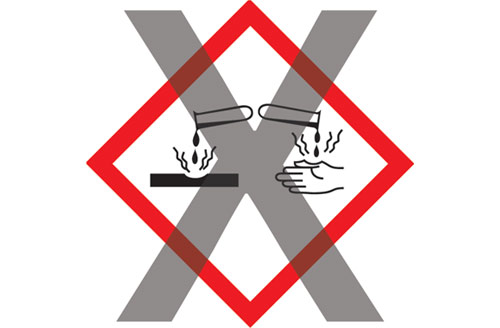
Corrosion
Indicate ingredients that may cause corrosive damage to metals, skin, or eyes.
Acceptable Pictograms:
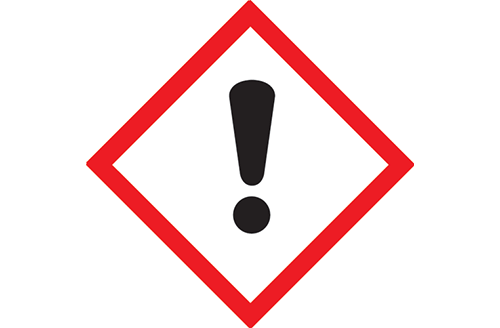
Hazard
Indicates an ingredient that may cause irritation or allergic response in those allergic to the ingredient. These effects are temporary and not severe, representing a much lower risk than fragrances that carry the pictograms above.
- When shopping for fragrances, look carefully at the SDS sheets provided by the fragrance manufacturer or supplier. If the SDS sheets from a supplier all seem to contain the same information, this can be a red flag. Suppliers are required to provide accurate SDS sheets for every fragrance they sell. If you notice seemingly identical SDS sheets, we encourage you to ask that supplier more questions before purchasing.
Today and Beyond
The goal of all this work was, and remains, simple: peace of mind for anyone using our fragrance oils in their homes, around their families, and in their businesses.
We have always been committed to having the safest, highest quality, most thoroughly tested fragrance line in our industry. Striking a balance between safety and performance requires ongoing monitoring to make sure we stay up to date with the most recent data and research. As regulations evolve and new fragrance safety research becomes available, CandleScience Clean Scents™ standards evolve, too.
We are extremely proud to name so many of our fragrances as CandleScience Clean Scents™ and we will continue to push for more ingredient transparency. We want our community to experience the joy of creating something amazing, confident that they are using fragrances designed to be safely used in everyday settings. When you’re using Clean Scents™ in your handcrafted products, that peace of mind is yours.
